

About the author:
Jess Garland is a former IRATA Level 3 rope tech, she spent 9 years dangling from ropes on a wide variety of sites before hanging up her harness to start a family. She continues to use her practical experience from a keyboard with Scannable.
But where does it say so?
We talked about the challenges of tracing rope in a previous blog. In this post, we look at:
Ultimately, the regulations for each country point to industry standards for Working at Height (we talked about standards and regulations in this blog, and also this one).
The Industry Standards require us to follow the manufacturer’s instructions.
Although regulations don’t go into the specifics of rope traceability, they do point you to industry best practice and industry standards—which is the first step in this chain of command.

Working at Height industry standards and best practice guidelines require users to use certified equipment and follow the manufacturer’s instructions.

The equipment standard states the requirements of what information needs to be included in the manufacturer’s product markings and user instructions.

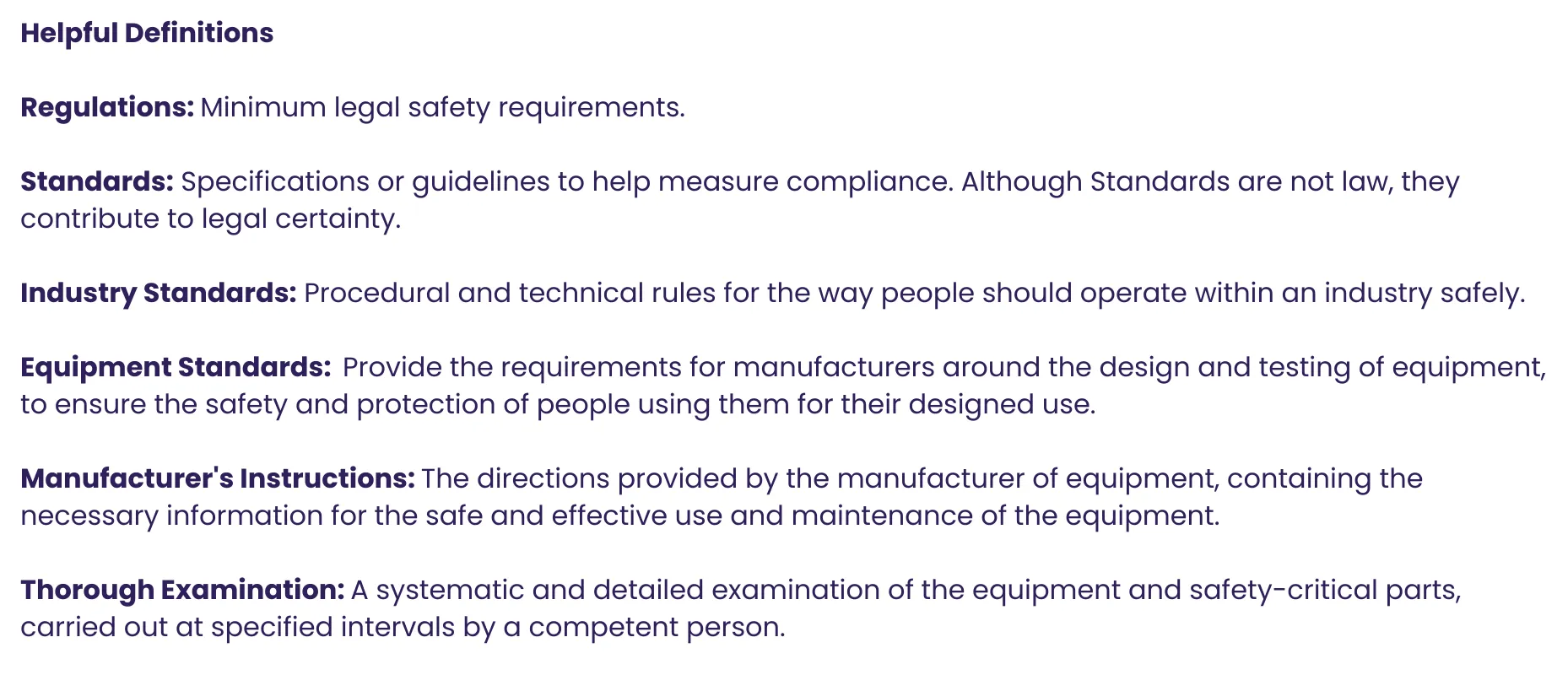
We can see from the table above that EN 1891 is recognised globally.
When it comes to rope standards, Canada and the United States are not so black and white.
For example, SPRAT and IRATA are regarded as best practice for Work at Height, and both reference EN 1891 among the rope standards they recognise. However, the USA and Canada’s standard bodies, ANSI and CSA, only reference CI (Cordage Institute) AND NFPA Standards, and do not mention EN 1891.
New Zealand and Australia have their own rope standards, but regard the EN standard very highly.
The regulations for Rope Access workers in New Zealand point to the document “Industrial Rope Access in New Zealand: Best Practice Guidelines”, which states in Section 5.2 “EN certification is recognised as the most modern and coherent set of applicable and compatible rope access equipment standards.”
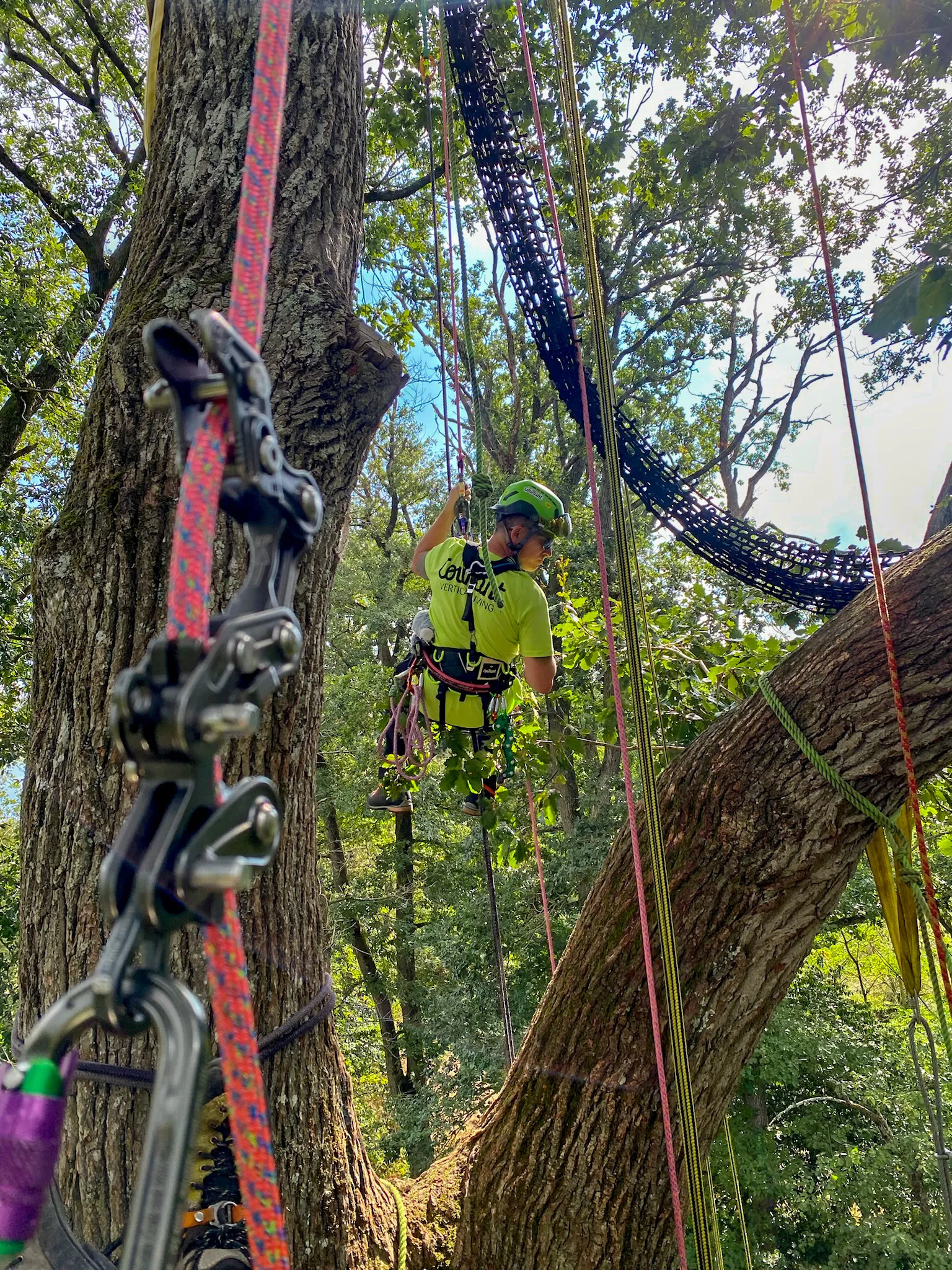
Petzl states “Cutting a rope makes you responsible for measuring the new lengths and adding new markings.”

Teufelberger specifies “Sections of the low stretch kernmantel ropes must be marked at both ends..”. They go on to list what information must be included.

Courant lays out what they constitute as rope labelling and give a protocol for the marking of any rope that is cut.
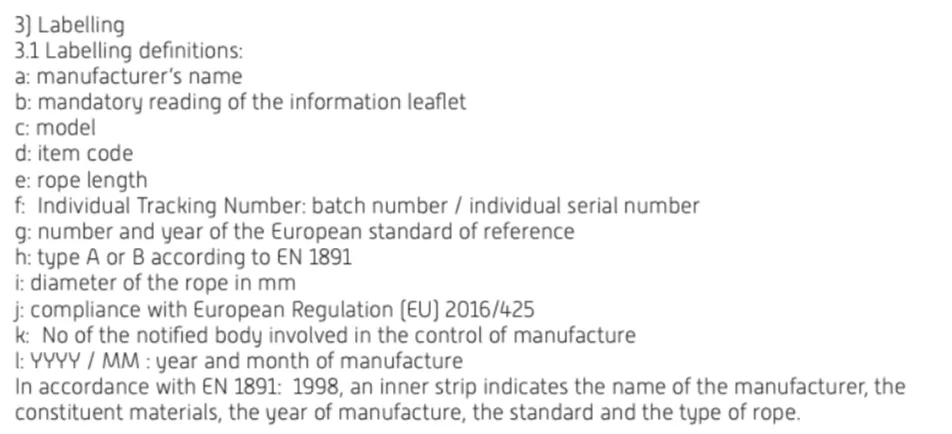

Mammut says that sections of kenmantle rope must be labelled on both ends and list the information that must be included. They also list a rope label as something that must be present and legible during inspection.

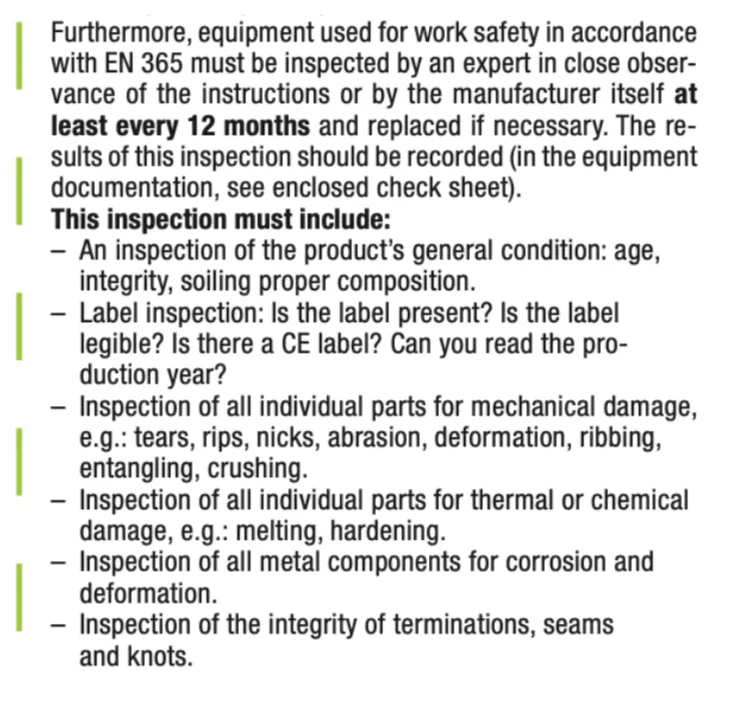
The Petzl Ray is certified to NFPA 2500 Technical Use, ANSI Z459.1 and CI 1801. Although it is not a requirement set out by the certifications, Petzl instructs that if the rope is cut into several pieces it must be marked with the correct lengths and end markings, and furnished with a copy of the instructions for use.
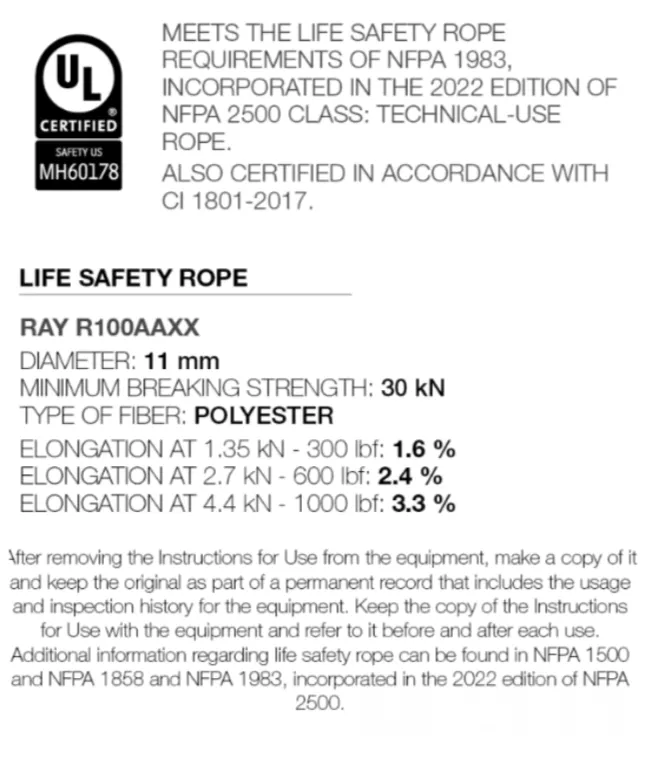
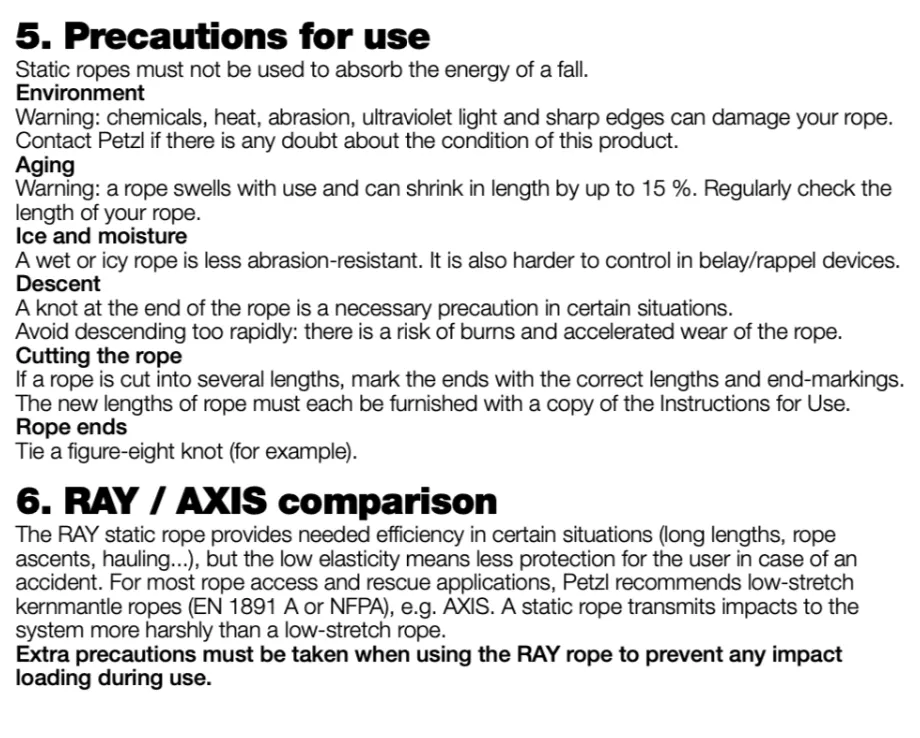
In Canada and the United States, SPRAT and IRATA are regarded as best practice for Work at Height. Both reference EN 1891 among the rope standards they recognise.

However, OSHA and SPRAT specify that ropes must be rated to 5,000 lbs (22.2kN). EN 1891 Type A ropes are only required to sustain 22 kN, and type B ropes 18 kN, so it is important to check that any rope used in the US or under SPRAT best practice exceeds this standard.
US and Canada’s Standard Bodies, ANSI and CSA only reference Cordage Institute (CI) Standards.
CI 1201 is the general standard for all fibre cordage and ropes, and outlines label requirements.
CI 1801 standard is more specific. It covers the general characteristics and testing requirements of low stretch or static kernmantle ropes used for life safety applications.
The most universal equipment standard for low stretch rope is EN 1891. It is recognised all over the world.
EN 1891 (types A and B) require the following compulsory information to be provided by the manufacturer on the product:
When a reseller cuts a rope, it is no longer marked at both ends (as it was supplied by the manufacturer).
EN 1891 (clause 7) states that the manufacturer’s guidelines must advise that any cut lengths be marked as described above.
So, a reseller of EN 1891-certified rope is obligated to provide customers with the documentation for the rope that is being sold.
As well as access to the instructions, the customer’s length of rope should be supplied with:
This information makes it possible for the rope to be traced through its service life.
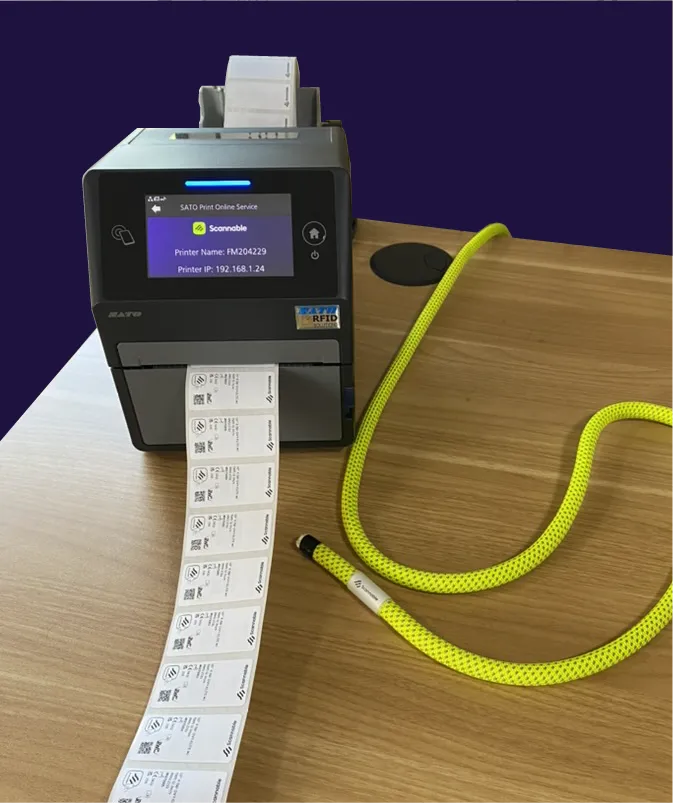
Typically we don’t see CI labelling on kernmantle EN and ANSI certified life safety ropes. CI 1801 and NFPA 2500 only require rope to be physically marked internally but the rope needs to be sold with a booklet or tag with a specified set of information, the minimum requirements being:
A rope owner is instructed to keep records of the rope’s life.
Workers literally have their life on the line so regular rope inspection is paramount to worker safety. Documenting these inspections is necessary for this day in age.
.webp)
Scannable makes this process effortless—a rope’s documentation can be accessed at the click of a button from the moment it is cut from the reel, with the new length linked with its master spool’s serial number.
Further down the line, the rope can be scanned with a phone to access its ‘paperwork’ and life history, and inspection notes, photos, and results can be recorded and accessed through the app. If the rope is cut again for any reason in service, its information can be easily accessed and encompassed into the new rope’s identity.